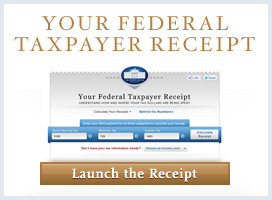Following Doctor’s Orders
Posted by on April 01, 2010 at 12:52 PM EST
Since the President signed the health insurance reform bill into law last week and the reconciliation package into law this week, some critics have been carping that the bill does not do enough to constrain health care costs — or as OMBlog readers know it, "bend the curve."
I have noted before that the bill contains all the main reform ideas out there to reduce health care cost growth over time — in addition to the deficit reduction it achieves even in its first decade. Notably, the law includes an excise tax on insurance companies offering high-cost health insurance plans and the Independent Payment Advisory Board (IPAB) — an important mechanism to keep the health care system dynamic and efficient.
Nonetheless, in response to some of the recent skepticism, OMB's staff went back through the document that the Congressional Budget Office released last June entitled "Health Care Reform and the Federal Budget." In this analysis, CBO discussed the potential effects of health reform on Federal government expenditures, and identified policy options that could increase efficiency in the health care system.
If you look at the policy options CBO assessed as having the biggest potential for reducing long-term health care cost-growth, you will see that a vast majority of these proposals are, in some form, part of the historic health care reform legislation the President signed into law last week, including:
- Create Accountable Care Organizations – The legislation includes a Medicare Shared Savings Program that will encourage physicians and hospitals to work together to increase accountability for patients and better coordinate their care both improving the quality of medical care while lowering costs.
- Bundle Payments to Hospitals and Other Providers – The legislation creates a National Pilot Program on Payment Bundling that will test methods to better integrate hospital, post-acute care, and other services so that Medicare beneficiaries receive better coordinated, higher quality, and more efficient care.
- Provide Additional Information About Treatments’ Effectiveness – The legislation creates a private, non-profit organization for Patient Centered Health Research to examine the comparative clinical effectiveness, risks, and benefits of different treatments and services.
- Modify the Tax Treatment of Employment-Based Health Insurance – Starting in 2018, the legislation implements an excise tax on insurance companies offering high-cost health insurance plans. This provision will create a strong incentive for more efficient plans that will help reduce the growth of premiums over time.
- Reduce Annual Updates in Medicare’s Payments to Reflect Expected Productivity Gains – The legislation will adjust annual payment updates to better align payments with costs and encourage providers to achieve greater efficiencies which can result in savings to Medicare and its beneficiaries.
- Combine Increased Discretion to Change Medicare with a Fallback if Savings Were Not Obtained – The legislation creates an Independent Payment Advisory Board that, beginning in 2014, will annually recommend proposals to Congress and the President that will slow the growth in Medicare spending and improve the quality of services for Medicare beneficiaries.
What’s more is that the health reform law not only includes these CBO-discussed proposals, but also a host of other provisions that have the potential to increase efficiency and reduce costs in the health care system. These provisions include: standardizing forms, bills, and administrative procedures; expanding measurement of the quality of care; reducing payments to hospital if the patient gets an infection in the hospital; requiring Medicare carriers to provide peer-profiling information to physicians; establishing a Center for Medicare and Medicaid Innovation; requiring employers to report the cost of health benefits on employees’ W-2 forms; and implementing hospital value-based purchasing programs.
To be sure, just including these proposals in the legislation is no guarantee of success. There is much work to be done to implement these ideas and adjust them over time (a task made easier by the presence of the IPAB). Yet, it’s worth noting that we have given ourselves a quite auspicious start. Now, it’s up to us all to work together toward their success.
White House Blogs
- The White House Blog
- Middle Class Task Force
- Council of Economic Advisers
- Council on Environmental Quality
- Council on Women and Girls
- Office of Intergovernmental Affairs
- Office of Management and Budget
- Office of Public Engagement
- Office of Science & Tech Policy
- Office of Urban Affairs
- Open Government
- Faith and Neighborhood Partnerships
- Social Innovation and Civic Participation
- US Trade Representative
- Office National Drug Control Policy
categories
- AIDS Policy
- Alaska
- Blueprint for an America Built to Last
- Budget
- Civil Rights
- Defense
- Disabilities
- Economy
- Education
- Energy and Environment
- Equal Pay
- Ethics
- Faith Based
- Fiscal Responsibility
- Foreign Policy
- Grab Bag
- Health Care
- Homeland Security
- Immigration
- Innovation Fellows
- Inside the White House
- Middle Class Security
- Open Government
- Poverty
- Rural
- Seniors and Social Security
- Service
- Social Innovation
- State of the Union
- Taxes
- Technology
- Urban Policy
- Veterans
- Violence Prevention
- White House Internships
- Women
- Working Families
- Additional Issues

